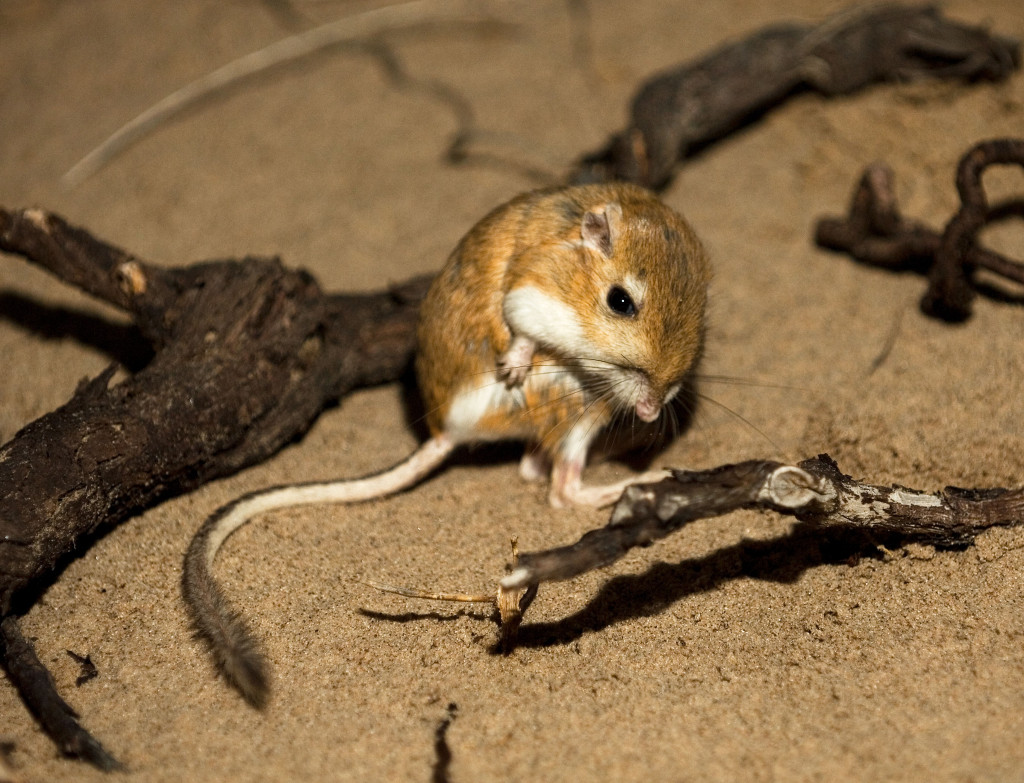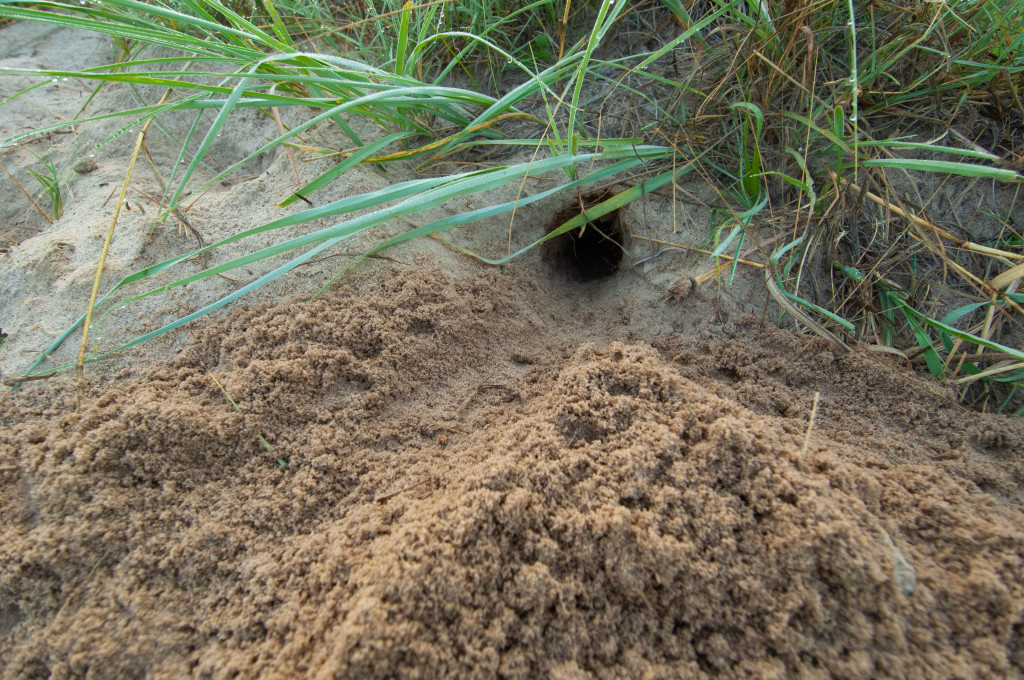
By Monica Macoubrie, Wildlife Education Specialist
If wild kangaroos are on your bucket list of animals to see, why travel 17 hours on a plane when you could spot one right here in Nebraska? I’m serious. With long tails, pouches and large back feet, watch for these creatures leaping across the road while you’re driving down a two-lane road at night. Though, now might be the time to mention that these Nebraska kangaroos are only about 8 inches long — and they are actually rodents.
Physical Features
There are 23 species of kangaroo rats in North America. The Ord’s kangaroo rat (Dipodomys ordi) is found in 17 states, including Nebraska, and it is the only species of kangaroo rat found in the state. The Ord’s kangaroo rat is the most common and widespread of kangaroo rats. These distinctive-looking rodents are normally a pale cinnamon color changing into dark gray on their backs. Their bellies are mostly white, and they have dark markings on their face and tail. The Ord’s kangaroo rat has a head and body around 4 inches long, but the rest of its length comes from its tail, which can add an additional 7 inches.
Another distinctive feature of this rodent is its extremely large, strong back feet, which have been modified for jumping in its brushy habitats. All four legs are used to move; however, kangaroo rats mostly travel by a jumping motion, which helps them move long distances fairly quickly. The front feet are predominantly used to pick up food and other materials while the animals rest on their hind legs and long tail.
Habitat
These rodents can be found mostly in western Nebraska in semi-arid regions. Their habitat preferences usually include arid climates with sparse vegetation covering sandy ground. Studies have shown that with an increase in ground cover, like vegetation, the population in the area will actually decrease. So, in Nebraska, there really is no better location than the western one-third of the state for kangaroo rats to live — more specifically the Sandhills.
Kangaroo rats are also one of few animals capable of establishing burrows in shifting sands. During the day, these animals protect their burrows by using their back legs to pack sand at the entrance. This not only ensures predators cannot get in while they are sleeping, but also helps keep out heat during the dog days of summer.

Diet
The diet of Ord’s kangaroo rats is primarily composed of seeds. To carry all these seeds, these rodents have special fur-lined cheek pouches to transport food back to their burrows for storage. In the summer, they may also feed on grasshoppers and moths.
Because these animals are mostly found in the arid or semi-arid areas of the United States, they are very effective at water retention. Kangaroos rats receive most of the moisture they need from plants that they eat, and they do not sweat or pant like other animals when they need to keep cool. Also, these rodents are equipped with a unique metabolism and specialized kidneys that allow them to survive without drinking water. As a result, they have very little need for water consumption and could technically go their whole lives without drinking water. They only drink water when absolutely necessary.
Behavior
Kangaroo rats are nocturnal. If you look closely, you will see large black eyes, which allow them to see at night, unlike diurnal, or daytime, animals. In addition to amazing night vision, kangaroo rats also have a keen sense of smell and extraordinary hearing.
For identification, individuals have a special oil-secreting gland that is located between their shoulders. Secretions from this gland help kangaroo rats distinguish individuals and sexes when they encounter each other’s scent in the wild. To keep their fur from becoming oily and matted, kangaroo rats will regularly bathe in sand.
Much like Australian kangaroos, these rodents can jump! If disturbed by a predator, such as a rattlesnake, these animals are like spring-loaded ninjas. They can jump up to 9 feet in the air and if needed, have the ability to switch directions mid-jump.
Yet, unlike Australian kangaroos, you will not see a mob, or group, of kangaroo rats in Nebraska. These rodents are solitary and will only allow a mate to approach during mating season. If two kangaroo rats encounter each other in the wild, there could be fighting, which involves aerial collisions and slashing from the hind legs.
Nebraska is home to a wide diversity of wildlife, especially in the Sandhills eco-region. The next time you are in the Sandhills and driving at night, watch carefully, and you may just see a kangaroo (rat) crossing the road.
